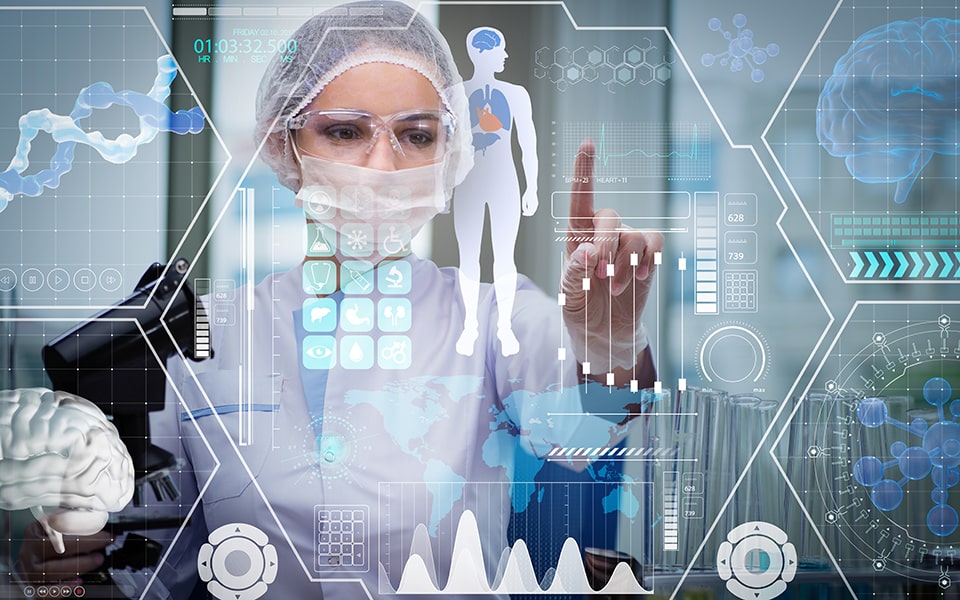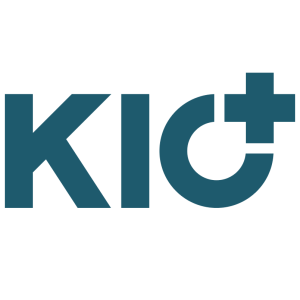One of the most promising areas of health innovation is the application of artificial intelligence AI in medical imaging, including, but not limited to, image processing and interpretation. Indeed, AI may find multiple applications, from image acquisition and processing to aided reporting, follow-up planning, data storage, data mining, and many others. Due to this wide range of applications, AI is expected to massively impact the radiologist’s daily life. Artificial intelligence (AI) can improve traditional medical imaging methods like Computed Tomography (CT), Magnetic Resonance Imaging (MRI), and X-ray by offering computational capabilities that process images with greater speed and accuracy, at scale.
AI has the potential to improve medical imaging with:
- Higher automation—AI can automate parts of the radiology workflow.
- Increased productivity—AI has better computational capabilities than humans, so it can analyze medical images faster than medical physicians.
- Standardized processes—AI can supply physicians with AI tools to compute big data and help physicians and encourage them to work smarter and more efficiently.
- More accurate diagnosis—studies show that AI can be more efficient than physicians and experts at diagnosing many diseases like cancer from medical images. For example, scientists at Google have created an AI that diagnoses breast cancer. The AI is fed with slides of medical images and uses DL algorithms to diagnose cancerous cells. The AI recorded a 99% accuracy in cancer diagnosis based on these slides compared to 38% of some physicians in the comparison group.
- Computing quantitative data—AI has the ability to use quantitative data in ways that are beyond the limits of human cognition. For example, AI can predict if a patient will suffer from heart failure based on their medical history and rate of hospital visits.
- Assistance for physicians—AI can compute a large amount of data, map it and represent the relevant parts in a brief and efficient format that physicians can use.

Applications
With the potential to improve and standardize the process AI can be applied in medical imaging for various medical tasks. However, AI is intended to be used in conjunction with human insight.
Medical applications for AI include:
- Medical image analysis—this technology can identify anomalies and diseases based on medical images better than physicians.
- Aids in the diagnosis of neurological conditions—AI can help physicians diagnose neurological diseases like Amyotrophic Lateral Sclerosis(ALS). A study has also shown that AI was able to predict Alzheimer’s disease years before it manifests.
- Revealing cardiovascular abnormalities—AI can measure a patient’s heart structure and indicate their risk of cardiovascular disease or other problems that might require surgery. Automated AI can be used to detect abnormalities in common medical tests like chest X-ray and lead to quicker risk detection and less misdiagnosis.
- Cancer screening—early cancer diagnosis often results in a better outcome for patients. Recently, scientists created an AI based on Convolutional Neural Networks (CNN), a type of Artificial Neural Network (ANN) used to identify various types of cancer (1,2,3) with a high success rate. These experiments show that AI can decrease detection times and improve the rate of diagnosis.
Prior to software implementation, patients would have to sit through longer MRI sessions so radiologists could obtain higher signal-to-noise ratio in the final image. Artificial intelligence in medical imaging can “de-noise” the raw digital data produced during the scan and delivers a clearer signal to the image reconstruction process. During COVID-19, artificial intelligence in medical imaging is helping radiologists and technologists fight the pandemic and keep the number of individuals in hospitals down, lowering the chance of transmission. Specifically, artificial intelligence not sharpens images in a shorter amount of time, but it can also boost scalable development and provide greater transparency into MRI model design and performance.

Medical artificial intelligence (AI) mainly uses computer techniques to perform clinical diagnoses and suggest treatments. AI has the capability of detecting meaningful relationships in a data set and has been widely used in many clinical situations to diagnose, treat, and predict the results.
Talk of artificial intelligence (AI) has been running rampant in radiology circles. Sometimes referred to as machine learning or deep learning, AI, many believe, can and will optimize radiologists’ workflows, facilitate quantitative radiology, and assist in discovering genomic markers.
Benefits to Deploying Artificial Intelligence in Radiology Workflows: Helping to improve productivity of clinical workflows utilizing imaging.
Assisting in lowering the risk of “negative” clinical consequences associated with delays in radiologist reading, interpreting and reporting.
